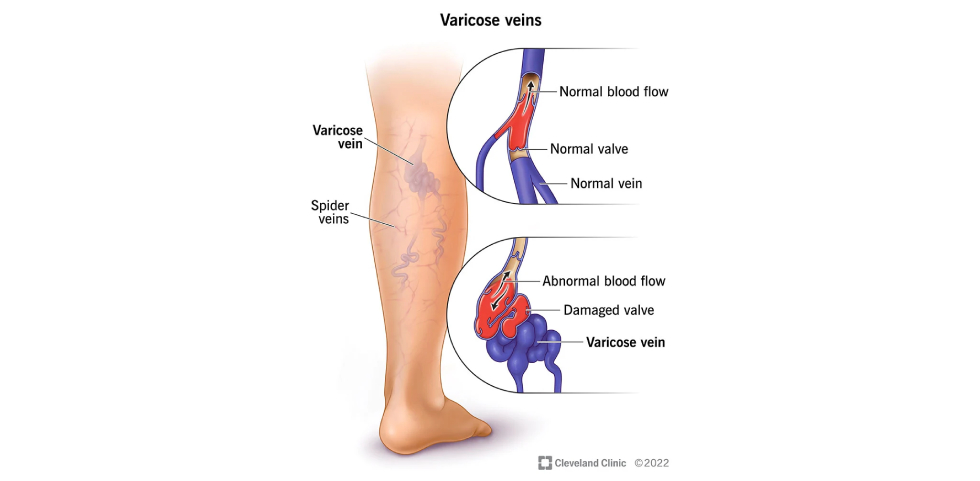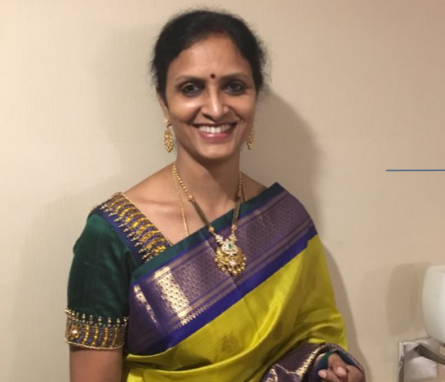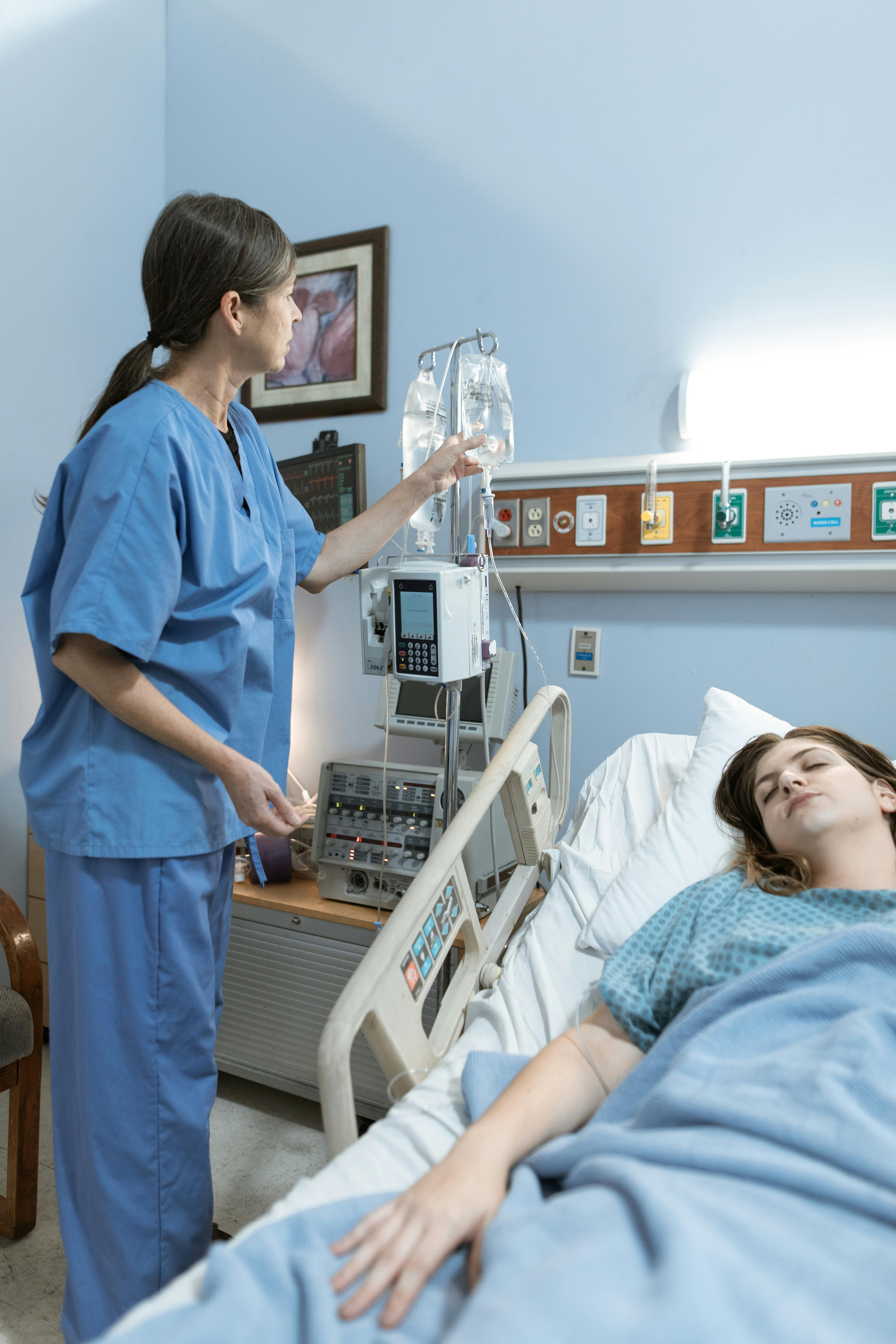Varicose Veins
Varicose Veins
Varicose veins are swollen, twisted veins, typically found in the legs. They occur when valves inside the veins weaken, allowing blood to pool instead of flowing smoothly back to the heart. This can cause:
- Visible bulging veins
- Aching or tired legs
- Itching or burning sensation
- Skin discoloration


Laser treatment offers a minimally invasive option for varicose veins. Here’s how it benefits you:
- Less pain and scarring: Compared to traditional surgery, laser treatment is less invasive, leading to quicker recovery and minimal scarring.
- Quick procedure: The in-office procedure usually takes less than an hour.
- Faster recovery: You can often return to normal activities right after treatment.
- Improved appearance: Laser treatment effectively shrinks varicose veins, improving the look of your legs.
- Potentially fewer side effects: Compared to other procedures, laser treatment carries a lower risk of side effects.
However, it’s important to consult a doctor to see if laser treatment is right for you. While effective, it may not be suitable for all cases of varicose veins.
what our patients say
Dr Jahnavi & Dr Satish Kumar Our Expert Team
Why Choose Our Expert Team?
At our center, your care is managed by a highly specialized and collaborative team, ensuring the best outcomes:
Dr. Jahnavi G: Radiologist Skilled in Interventional Procedures
- Expertise in minimally invasive techniques for precise and effective treatments, reducing recovery time significantly.
- Advanced imaging guidance ensures accuracy and success in treating varicose veins and related conditions.
Dr. Satish Kumar GS: Plastic Surgeon with Extensive Clinical Experience in Venous surgery and Wound Care
- Comprehensive expertise in managing surgically and medically, leg swelling, skin surgery, wound healing, and other leg-related concerns.
- Proficient in addressing sugical, medical and aesthetic aspects, providing relief while enhancing outcomes.
This unique blend of expertise ensures that every aspect of your condition is addressed with precision, care, and a patient-centered approach tailored to your individual needs.

Interventional Radiology and laser Expert – Dr. Jahnavi

Dr. Jahnavi G. is a highly skilled radiologist with an MBBS, DMRD, and DNB, having undergone rigorous training under the esteemed Dr. Kakarla Subba Rao and Dr. Ramasubbarayudu.
Dr. Jahnavi is adept in performing advanced procedures such as laser and radiofrequency ablation of varicose veins, addressing incompetent venous junctions and perforators, and guided sclerotherapy. Her proficiency in color Doppler studies ensures precise diagnostics, enabling effective treatment planning. With her patient-centric approach and dedication to excellence, Dr. Jahnavi remains an active participant in delivering state-of-the-art care to patients with venous disorders.
Dr. G.S. Satish Kumar – Surgical and Laser expert
Dr. G.S. Satish Kumar, MS, MCh, delivering advanced laser and surgical care in Guntur, since 1999, following his specialized training in Plastic Surgery at the prestigious Nizam’s Institute of Medical Sciences and Osmania Medical College, Hyderabad.
Dr. Satish Kumar has extensive expertise in the management of varicose veins, spanning from traditional open surgical procedures to the latest interventional techniques.
His repertoire includes modern lasers and tradtional SFJ ligation, perforator ligation where required and wound excisions, and modern wound healing methods such as PRP (Platelet-Rich Plasma), GFC (Growth Factor Concentrates), and nano-fat grafting. Growth factor-based treatments, specialized multi-layer bandaging, and compression therapies for managing lymphatic and veno-lymphatic edema, venous stasis, and chronic ulcers.

How is the laser fiber introduced
No Surgical Cutting – Minimally Invasive Approach:
If you are feeling apprehensive about the procedure, rest assured that Endovenous Laser Therapy (EVLT) is a minimally invasive treatment. There are no surgical incisions or cutting involved. Instead, a thin laser fiber is introduced into the affected vein using a small needle, similar to an IV placement. This ensures minimal discomfort, quick recovery, and excellent cosmetic results.

Procedure Overview:
Varicose Vein Laser Therapy: Admission, Procedure & Discharge
Admission Process: Upon arrival, you will complete necessary paperwork, undergo a medical history review, and have a consultation with the doctor. Pre-procedure instructions will be provided, followed by a physical examination and ultrasound mapping of the veins. A nurse will then prepare you for the procedure.
Procedure Overview: Endovenous Laser Therapy (EVLT) is a minimally invasive treatment. The steps include:
-
Preparation: Cleaning, sterilization, and local anesthesia.
-
Ultrasound Guidance: A small catheter is inserted into the vein.
-
Laser Application: A thin laser fiber delivers energy to close the vein.
-
Completion: The catheter is removed, and a compression bandage is applied.
-
Duration: Typically 30-60 minutes.
Post-Procedure & Discharge Instructions:
-
Compression Stockings: Wear as instructed to promote circulation.
-
Activity: Walk regularly, avoid prolonged standing/sitting.
-
Pain Management: Mild discomfort may occur; pain relievers can be used if needed.
-
Wound Care: Keep the area clean and dry for 24 hours.
-
Follow-up: A visit will be scheduled to assess healing.
-
Warning Signs: Contact your doctor for excessive pain, swelling, redness, or infection signs.
By following these guidelines, you ensure a smooth recovery and optimal results.
Contact Us Today

